#ming dynasty 2019
Text
[ENG] Ming Dynasty - LAY

Trailer
Episodes
All Episodes (1-62) available on [viki] [youtube] [kissasian]
Other
Fanmeeting [RAW]
Behind the Scenes [1]
Happy Camp
The story of the emperor ZhuQizhen [RAW]
3 notes
·
View notes
Text
Some Chinese fashion styles
Disclaimer: The following styles and their definitions were observed by me and are not authoritative. I am only familiar with Hanfu and if I made mistakes and picked the wrong photo examples or fraud shops, please let me know. Also, this post focused on women's fashion because 1. I am not into men's fashion so I don't know much about them. 2. The algorithm also knew that so I don't really see them.
汉服/Hànfú
传统服饰/Chuántǒng fúshì (传服/chuán fú)
清汉女/Qīng hàn nǚ
旗装/Qí zhuāng
旗袍/Qípáo
新国风/Xīn guó fēng、新中式/Xīn zhōngshì
汉元素/hàn yuánsù
茶艺服/Cháyì fú or 茶服/chá fú
唐装/Tángzhuāng
中山装/Zhōngshānzhuāng.
汉服/Hànfú
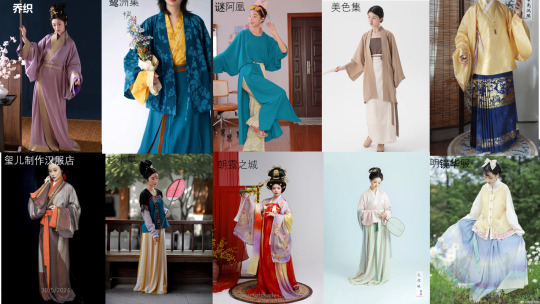
The ethnic clothing of Han Chinese (not the Han Dynasty).
There was a prohibition of Han clothing and hair styles in Qing dynasty, i.e. the 剃发易服/Tìfā yìfú qu Queue Ordinance, so modern hanfu is an on-going revivalist moment.
Modern hanfu are based on archeological evidences with minor twists to suit modern like, such as the type of fabric used and cut.
As a result, there are many types of garments and sub-styles. The figure above shows some examples.
While which style should be included and promoted is a constant debate, but in general, the cutout line is the Qing dynasty (however small accessories such as purses are alright).
传统服饰/Chuántǒng fúshì (传服/chuán fú)
No example because I am not sure who identified with this label.
The Chinese traditional clothing.
This either referred to historical clothing restorers (regardless of ethnicity) or people who promoted that the traditional clothing of Han people should be in the late Ming dynasty style, since "people should get up at where they had fallen".
They might be agreeable with the hanfu movement or not.
清汉女/Qīng hàn nǚ
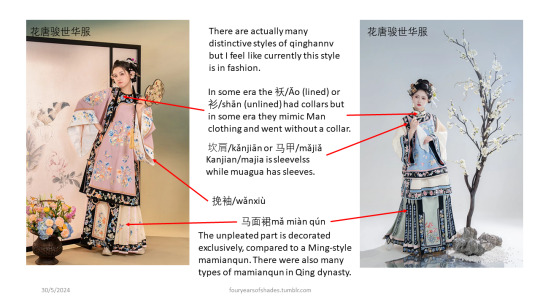
The clothing of women of Han Chinese in the Qing dynasty.
Since the Queue Ordinance wasn't that strictly enforced on Han women, the Han women clothing in the Qing dynasty had quickly absorbed Manchurian's elements while retaining the characteristic two-piece silhouette. (Manchurian women wore a one-piece robe.)
I believed it appeared around 2019 when the styles of hanfu had moved to fully embroidered surface to a more tone down brocade or weaved patterns.
旗装/Qí zhuāng

The ethnic clothing of Man people (Manchurian).
The women's clothing are generally in round collar opened on the left (youren) with straight sleeves.
The most basic item is a 衬衣/chènyī, which doesn't have vents.
However, the most common item I have seen on the street is a 氅衣/chǎng yī (probably rented), which should be worn on top of 衬衣, since they have side vents.
They usually have no standing-up collar but in some cases a fake collar could be worn.
On top of changyi they could wear a 马褂/mǎguà、坎肩/kǎnjiān、褂裥/guà jiǎn.
旗袍/Qípáo
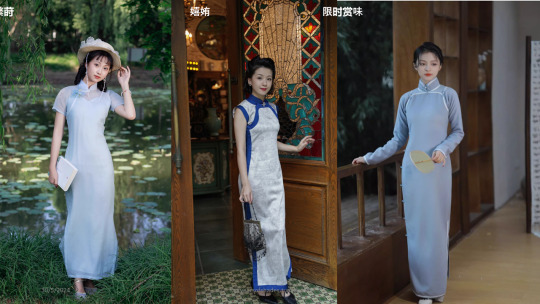
The Chinese clothing of women originated from the Minguo era, known in English as qipao or cheongsam.
The male equivalent is 长衫/chángshān.
Currently in style is the retro-cut, while uses the traditional flat cut (no shoulder seam) instead of the more body-hugging modern draping style.
There are also many variations and cuts, but the overall silhouette is similar.
新国风/Xīn guó fēng、新中式/xīn zhōngshì
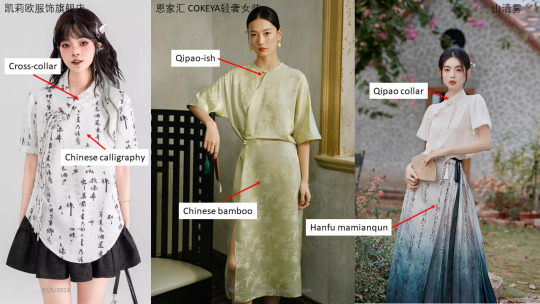
Innovative clothing that was inspired by Chinese traditional aesthetic.
It is an umbrella term.
汉元素/hàn yuánsù refers to clothing inspired by hanfu specifically, while xinguofeng could be inspired by qipao and other ethnic clothing. In addition, hanyuansu is a term more familair to hanfu-ers, so the target audience is slightly different between hanyuansu and xinguofeng.
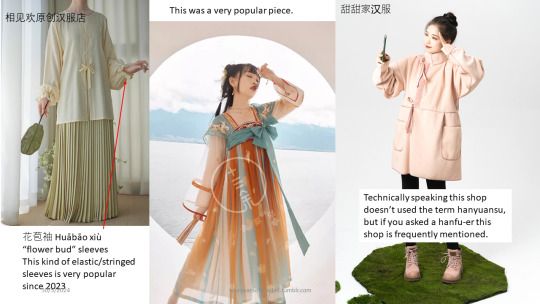
茶艺服/Cháyì fú or 茶服/chá fú,i.e tea dress, which aimed to convey a zen and rustic aesthetic could also be considered a sub-style. They are often worn by retirees, artists or workers in tea shops, calligraphy shops, Chinese spas, Chinese traditional medicine clinics etc.

The older "Chinese style" generally refers to 唐装/Tángzhuāng and 中山装/Zhōngshānzhuāng.
Tangzhuang (Tang Suit) was a men suit characterized with a mandarin collar with a row of 盘扣/pán kòu frogs in the middle. There are two pockets at the bottom front of the suit. It was a well-known looked worldwide due to the 2001 APEC summit. However, other clothes resembled a 马褂/mǎguà could also be called a tangzhuang.
Zhongshanzhuang was designed and named after Sun Yat-sen but was often known in English as the Mao Suit. Mao Suit was characterised with a 关门领/Guānmén lǐng(“closed-door collar", but also known as Mao collar in English) with a row of round buttons. There are four pockets at the front of the suit.
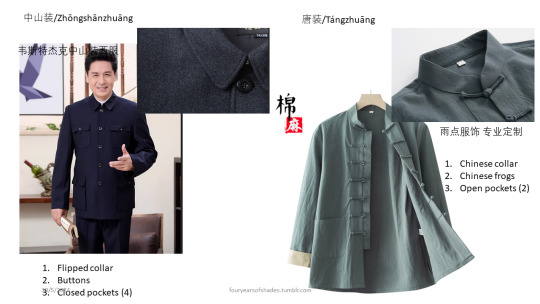
中华lolita/Zhōnghuá lolita
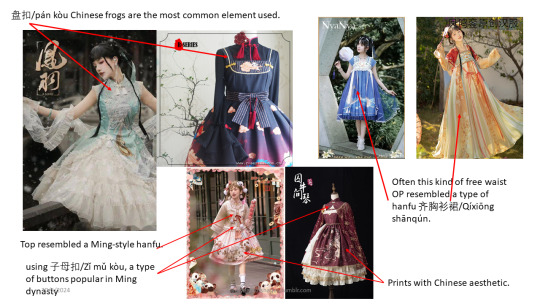
A sub-style of the lolita fashion inspired by cheongsam/qipao, hanfu or other Chinese artistic elements.
The same item could appeared in different styles, but with different cut and accessories. The following examples showed a mamianqun used in different styles.

THE END
#chinese fashion#hanfu#qinghannv#qipao#qizhuang#chinese language#non-hanfu#lolita fashion#terminology#i rarely seen men in alternate fashion#like i saw maybe one in the last year#they spent money elsewhere#like shoes#long post#reference#fouryearsofshades#i spent so much time on this post#hope you will like it#feel free to correct me if i am not right
535 notes
·
View notes
Text
Looking back on my first year as a c-drama fan!
This year I fell - first down a flight of stairs - and then (because I couldn't walk properly for a few weeks) down a rabbit hole of cdramas!
In total, I have watched 28 dramas since May. I actually finished 17 of them. I re-watched 8 of them at least once. My most rewatched show is Till The End Of The Moon, followed by Love Is Sweet and The Untamed!
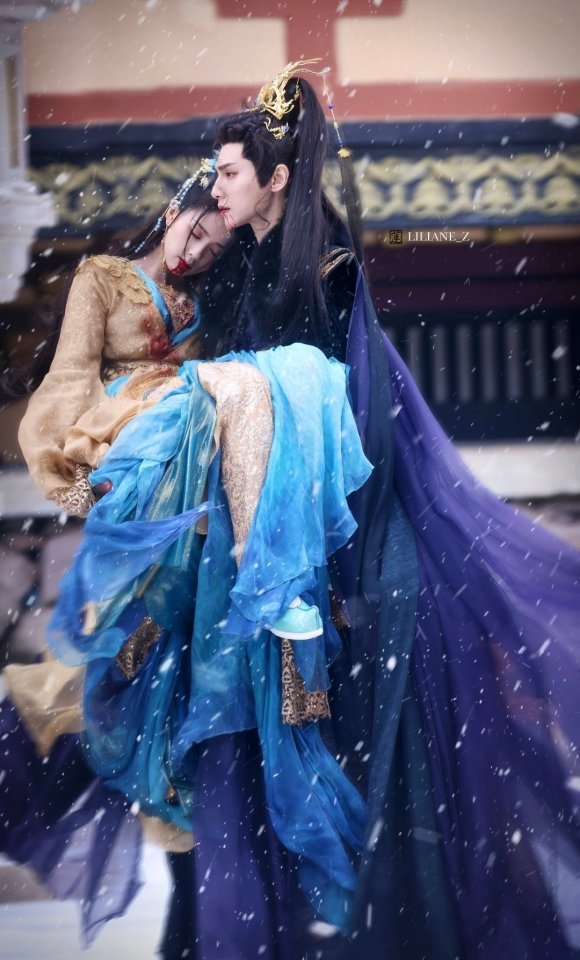
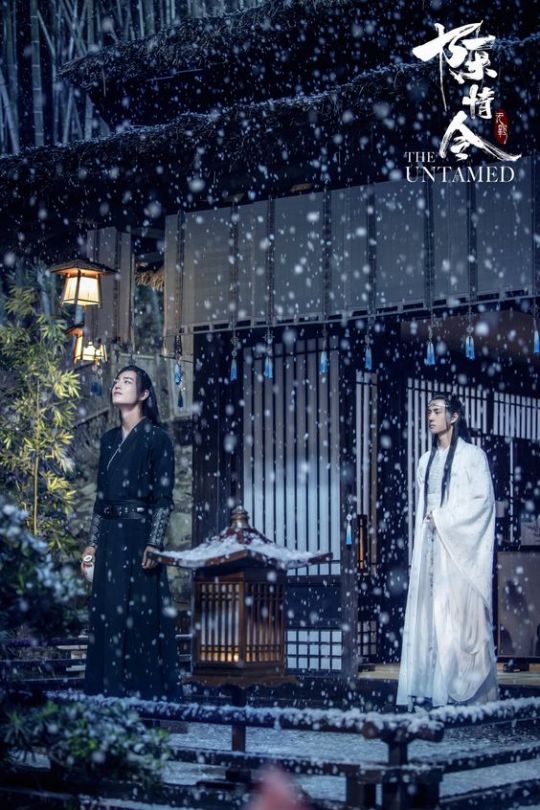
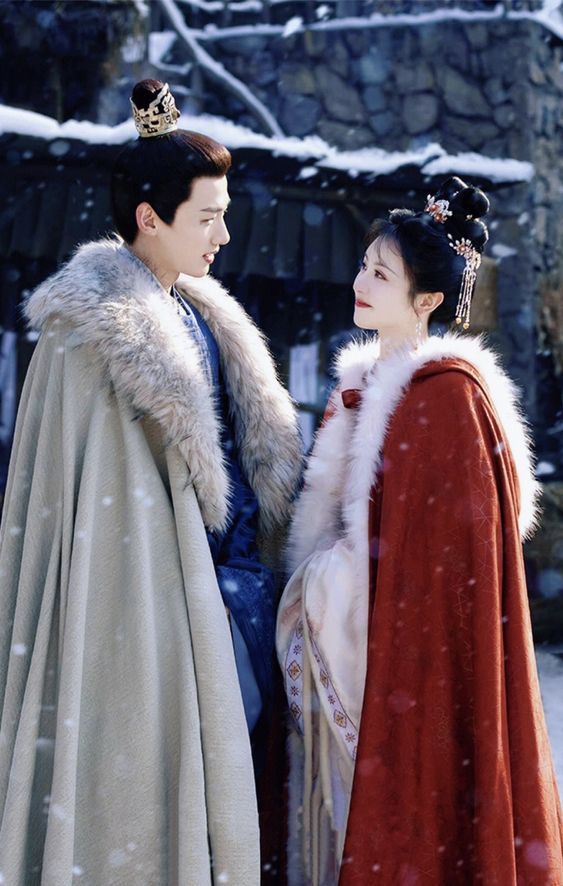
Shows I loved
Till The End of The Moon: This drama triggered my hyperfixation, and I still love it so much. Tantai Jin became my new obsession.
Love is Sweet: This one surprised me because I don't usually care for romantic dramas. It made me more open to different genres.
The Untamed: I watched this for the first time in 2019, and now I can appreciate it even more.
The Sleuth of Ming Dynasties: It took me several tries to get into the drama because the political setting was too complicated. I'm glad I didn't give up. Wang Zhi became one of my favorites!
New Life Begins: I was just looking for something light in between and was quite surprised how much I liked the show.
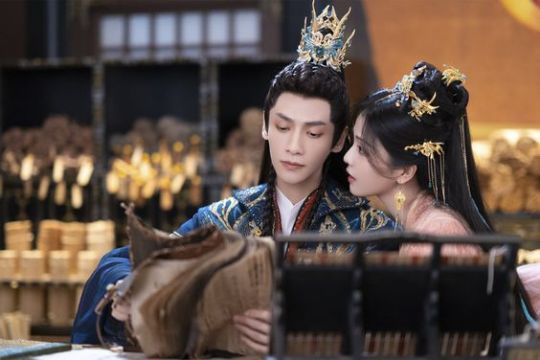
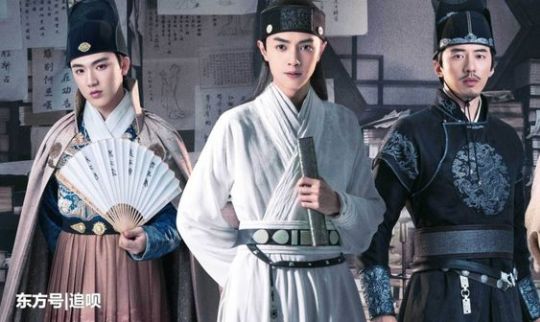
Things I learned as a newbie:
Cdramas are an acquired taste. Sometimes it's worth going back to a drama that you initially gave up on.
To avoid spoilers, it's best to skip the intro and especially the outro.
I love my characters unhinged.
Apparently it is okay to share leaks from filming.
Never believe anything that comes from yxh accounts.
Shippers are toxic in any fandom.
C-drama fans are a bit older than K-pop fans, but they can be just as unhinged and have trouble distinguishing between how to treat actors and the fictional characters they play.
My ADHD is better regulated when I watch shows in a foreign language while reading the subtitles. I don't get bored watching TV, which is rare!
Shows I dropped, and what I learned from it:
Hidden Love: I still don't like romances that have no significant plot beyond the relationship. Especially if I don't care about the characters at all.
Back from the Brink: Sometimes dramas that start well become an unwatchable, rage-inducing mess halfway through, and it's not worth sticking it out to the end.
Beauty of Resilience: I'm a character-driven audience. If the characters aren't compelling and the story isn't interesting, I don't care about the show.
Ashes of Love: I hate childish FL with baby voices and naive personalities. I need better written female characters. I'm on my 3rd attempt to watch this show and I only have a handful of episodes left, so I'll actually make it to the end (eventually).
I've dropped a lot more shows and actually watched some to the end that I didn't like very much in the end, but those are the ones I learned the most from.

What will stay with me:
Tantai Jin: I'm still obsessed with this character. He is everything I need in a fictional character.
Luo Yunxi: This will come as no surprise to anyone who follows me, but my obsession with TTJ soon extended to Luo Yunxi.
Bai Lu & Sun Zhenni: While I appreciate both of them as actors, it's their fun and uninhibited personalities that made me fall in love with them!!
Costumes: I adore the detailed costumes and hanfu styles, and do prefer costume dramas to modern ones.
Food & drinks: I'm now looking into more Chinese foot now and how to cook vegetables in more interesting ways. I also bought "moon cake stamps"... so wish me luck!
New online acquaintances: I have made some new friends online who I can fangirl with to my heart's content!
What I'm looking forward to in 2024:
I'm really looking forward to Luo Yunxi's upcoming dramas, Follow You Heart, Shui Long Yin and Immortality (🤡). I'm also looking forward to Sun Zhenni's first leading role!
There are still many dramas I want to watch, but haven't found the time for. Like A Journey to Love, Goodbye, My Princess, Nirvana in Fire, Then Miles of Peach Blossoms and The Blood of Youth.
I'm not sure what else I'll post here next year. Probably more reviews and content related to my favourite actors. Let's see if something triggers my hyperfixation soon!
Happy New Year!

56 notes
·
View notes
Text
Historical Fashion in The Priory of the Orange Tree
I'm not a historian, but I've spent a significant amount of time over the past decade researching historical fashions from across the world. Naturally, this colored my reading of The Priory of the Orange Tree when I first read it in 2019. I started rereading Priory this month in anticipation for the release of the sequel, and I thought it would be fun to share my ideas for the clothing styles of the various countries in the book, based on real-world historical fashion. I also wanted to use this as a moment to compare some of the fashions of Priory with those in the forthcoming A Day of Fallen Night. These are by no means definitive; they're just my personal headcanons for the book, but I thought some fans and artists would appreciate this as a reference.
To begin, Inys and Queen Sabran's court reminded me heavily of Elizabethan England, so while reading Priory, I mostly thought of the book taking place in an analogue to Earth of the mid-to-late 1500s. This colors my perception of the various clothing styles, so you will notice that most of the countries will have clothing from the same century or thereabout. This extends to Fallen Night, which takes place 500 years earlier, but only for the countries that I was able to find enough reference information on. (Trying to find fashion references for eleventh and twelfth century Europe and Africa on the internet is very difficult!) I've made (terrible; I am not a graphic designer) collages to lower the photo count in this post, but please keep in mind that this post is still image-heavy.
SEIIKI
Seiiki is based off of Edo-era Japan. In keeping with the 1500s theme, I have imagined fashions similar to those of the very early Edo period and the late Azuchi-Momoyama period. With how they are described in the text, I believe the wealthy and fashionable in Ginura would likely dress more like the fashions from the early 1700s with elaborate nihongami and extensive sea-themed accessories.

For A Day of Fallen Night, this would land us squarely in the Heian era, my personal favorite of the Japanese historical eras in terms of fashion. Now I can only imagine Princess Dumai with extremely long hair lmao.

SEPUL
Sepul is based off of Korea. We don't know much about Sepul, but for Korea, the 1500s would have been towards the beginning of the Joseon dynasty. 16th century hanbok looked more similar to the hanbok of Goryeo, as opposed to the more "classical" 18th century style of Joseon hanbok that is used today in film and re-enactments.
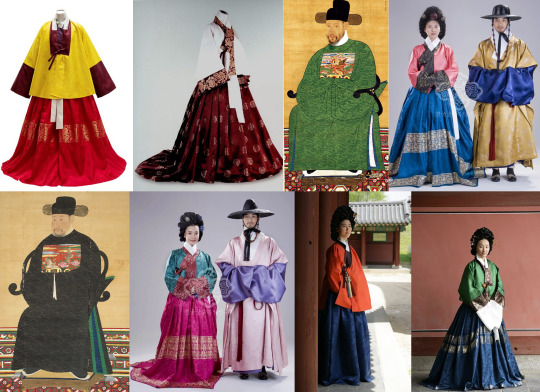
For Fallen Night, that puts Sepul in the middle of the Goryeo dynasty, when it followed Song dynasty fashion. However, Sepul is a queendom, and during the Silla period, Korea had three regnant queens. Because of this, I imagine that the queens of Sepul would likely dress more similar to the royalty of Silla, with their elaborate crowns and gold chains.
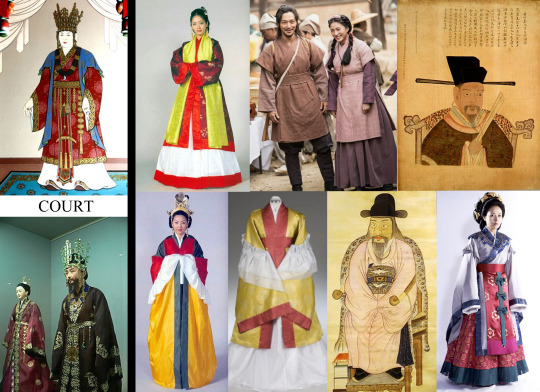
EMPIRE OF THE TWELVE LAKES
The Lacustrine are based off of China, and the 1500s lands us in the later half of my favorite Chinese dynasty: the Ming. We don't get to see much of the Empire, but what we do see is very lavish and grand, much like Ming dynasty hanfu itself.

500 years back lands us in the Song dynasty. One of the interesting trends of the Song dynasty was pearl makeup, something that would likely be popular in the Twelve Lakes due to the continent's general aquatic theme.

INYS
Inys is based off of England, and while reading I imagined something similar to the fashions of the 1560s and 1570s during Queen Elizabeth I's reign. I'd also imagine that Inys would be "behind" in terms of fashion compared to Mentendon, due to how Inysh society and fashion is described as more conservative.

MENTENDON
Mentendon is based off of the Netherlands, and I particularly imagined it similar to the Dutch Republic, especially in regards to the country's relationship with Seiiki. The Dutch began trading with Japan in the early 1600s, so much of my headcanon for Mentendon is based off of the Baroque era, particularly the 1630s and 1640s. Mentendon seems to be the most liberal nation of the West, so I'd imagine their fashions to be more forward-facing while still retaining a lot of the similarities to the Elizabethan era, such as the usage of lace ruffs, doublets, and kirtles. Aubrecht and Truyde are described as having long, loose, curling hair, which fits perfectly with the popular hairstyles of these decades.

YSCALIN
Spain was the inspiration for Yscalin, and I imagined something similar to the 1540s and 1550s, particularly modeled after renaissance Italy as opposed to the Tudor stylings of the English and French.
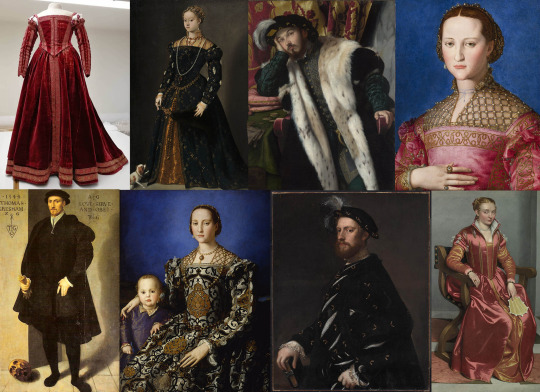
LASIA
Lasia is based off of the Kingdom of Kongo, a state that existed in present day Angola, Republic of Congo, and Democratic Republic of the Congo from 1390 until 1857, when it was colonized by Portugal and made a vassal state of the Portuguese Empire. As such, it is difficult to find references for Kongolese fashion without the influence of Portuguese-style clothing. As far as I am aware, the references below are from the 1500s and 1600s and represent Kongolese clothing without European influence.
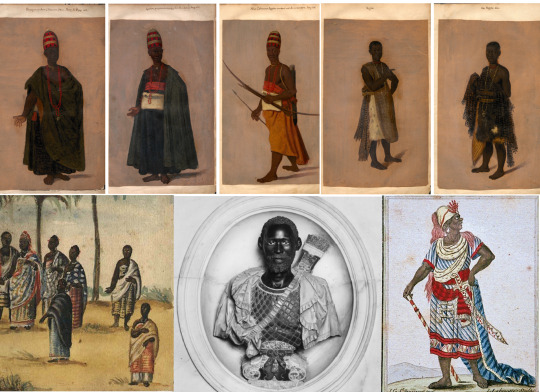
THE ERSYR
The Ersyr is based off of Iran. We don't get to see much of the Ersyr in Priory, but Chassar would likely wear Ersyri fashions even when away from home. For Iran, the 1500s puts us at the beginning of the Safavid Empire. The reference images below are from the 1570s to the 1650s.
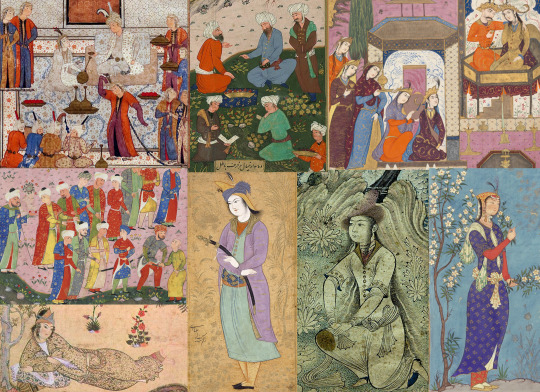
For Fallen Night, the eleventh century would be the Abbasid Caliphate. Below are images of artwork from that era to give a general sense of the styles during that period.

If anyone has any additional information or corrections about the fashions from these time periods in this countries that they would like me to add to this post, feel free to send me an ask or a DM. Thanks for reading! Looking forward to reading A Day of Fallen Night later this week. :)
#priory of the orange tree#day of fallen night#the roots of chaos#historical fashion#historical clothing#neph.txt#neph analysis
249 notes
·
View notes
Note
besides KH what should would you recommend that has a good bromance that you’ve seen so far this year…?
Hmm...a good bromance...I can recommend you a plethora, but they won't be all from this year. (Also note, a lot of these dramas won't say bromance but I wouldn't recommend them if I didn't see some bromance in there) (I've also labeled all dramas/movies that are strictly BL)
From this year:
A Legend of a Nobleman (cdrama, 29 eps)
Jiang Hu Shuo Nian Jue (cdrama, 20 eps)
Bokura No Shokutaku (jdrama, ongoing, BL)
Pledge of Allegiance (cdrama, 24 eps)
From previous years:
S.C.I (2018, cdrama, 24 eps)
The Sleuth of Ming Dynasty (2020, cdrama, 48 eps)
Original Sin (2018, cdrama, 25 eps)
The Yin-Yang Master: Dream of Eternity (2020, cmovie)
Master, Wait a Moment (2021, cdrama, 26 eps)
Light On Series: Under the Skin (2022, cdrama, 20 eps)
Checkmate (2022, cdrama, 24 eps)
Doubles (2013, jdrama, 11 eps)
Aozora No Tomago (2012, jdrama, 9 eps)
Where Do I Come From? (Boku wa Doko Kara) (2020, jdrama, 11 eps)
Rinshou Hanzai Gakusha Himura Hideo no Suiri (2016, jdrama, 10 eps)
Rinshou Hanzai Gakusha Himura Hideo no Suiri SP (2019, jmovie)
BG: Personal Bodyguard (2018, jdrama, 9 eps)
BG: Personal Bodyguard 2 (2020, jdrama, 7 eps)
Seven Days: Monday - Thursday (2015, jmovie, BL)
Seven Days: Friday - Sunday (2015, jmovie, BL)
HIS (JP 2020) (2020, jmovie, BL)
The Night Beyond the Tricornered Window (2020, jmovie)
Rasen no Meikyu: DNA Kagaku Sosa (2021, jdrama, 7 eps)
Beyond Evil (2021, kdrama, 16 eps)
Nobleman Ryu’s Wedding (2021, kdrama, 8 eps, BL)
The Devil Judge (2021, kdrama, 16 eps)
Color Rush (2020, kdrama, 8 eps, BL)
You Make Me Dance (2021, kdrama, 8 eps, BL)
Chimera (2021, kdrama, 16 eps)
Tinted With You (2021, kdrama, 8 eps)
Bad and Crazy (2021, kdrama, 12 eps)
Yaksha: Ruthless Operations (2022, kmovie)
Danger Zone Season 1 (2021, twdrama, 12 eps) *graphic
Danger Zone Season 2 (2021, twdrama, 12 eps) *graphic
Well, here's an extensive list with links for your viewing pleasure! I hope this is helpful to you!
22 notes
·
View notes
Photo

Liang Guanhua as Zhu Gaochi in the Drama: Ming Dynasty / Empress of the Ming: Legend of Sun Ruowei (2019)
Liang Guanhua (Chinese: 梁冠华; born 30 September 1964) is a Chinese actor.
Height: 178 cm
Liang Guanhua / 梁冠华 / 梁冠華 - Guanhua Liang
6 notes
·
View notes
Text
Prosecutors have called for two British brothers to be banned from Switzerland for five years as punishment for their role in raiding a museum of iconic Chinese Ming Dynasty artefacts.
At a court in Geneva on Monday, Stewart and Louis Ahearne confessed to being part of a gang which burgled the Museum of Far Eastern Art in June 2019.
On top of the ban, prosecutor Marco Rossier said the court should jail the brothers for four years.
They will be sentenced on Tuesday.
Mr Rossier told the court the brothers, who are from south-east London - and a third man named in court by lawyers as Daniel Kelly - were all "equally involved" in the burglary.
He said Louis Ahearne carried out reconnaissance of the museum, while his older brother Stewart hired a Renault Captur car out in his name - which he then drove to and from the scene of the crime.
"Louis Ahearne booked the hotel room, the ski masks and clothing used in the burglary," Mr Rossier said.
"Everything was prepared and organised. Everything was very quick."
Two bowls and a vase from the 14th Century were taken in the raid, Mr Rossier explained, adding one bowl was taken to a Hong Kong auction house by the three men. Stewart Ahearne left his passport details as they sold the item, the prosecutor added.
A second item, a vase, was recovered in central London as part of an undercover sting operation with Metropolitan Police officers posing as art buyers a year after the heist.
The third plundered artefact, a wine cup, has never been recovered.
Around 3.5m Swiss francs (£3.2m) worth of damage was caused to the Museum of Far Eastern Art which is based in a listed townhouse in Geneva's old town.
On Monday, Louis Ahearne said he carried out the burglary in order to "clear a debt" and Stewart Ahearne said he took "full responsibility" explaining he wanted to "protect" his younger brother.
Mr Rossier said the prosecution doubted the brothers' version of events as the third person was not in the court and is currently the subject of extradition proceedings to Japan.
The court also heard from Loris Bertoliatti, representing the Museum of Far Eastern Art, who said damage caused by a power saw, sledgehammer and crowbar cost the institution millions.
"They are a professional gang," he said. "They were determined to sell the items. The victim is the museum. Lots of people were shocked by what happened."
Stewart Ahearne's partner Nicola Barry was called as a witness on Monday and described the father-of-five as a "kind, loving and nice person" - adding his employer has committed to giving him a job when he is freed.
The brothers' mother, Suzanne Ahearne, said Louis Ahearne is a "compassionate and empathetic" person who had an "unhappy childhood".
She told the court since his extradition from the UK, he has been writing to his nine-year-old son from prison in Switzerland trying to "give the guidance he never got" from his father.
The Ahearnes' defence barristers will also provide mitigation before the president of the court Patrick Monney delivers his judgement.
The hearing continues.
3 notes
·
View notes
Text
My edits
All
3 Will Be Free / สามเราต้องรอด (2019) this is only from the trailer, i haven't watched the drama yet
Because of You / 因為愛你 (2020)
Bite Me / ส่งร้อน เสิร์ฟรัก (2021)
Cat in the Eastern Palace / 东宫吸猫 (2020)
The Courtesan and the Female Scholar / 花魁与女状元 (2021)
Dear Uranus / 親愛的天王星 (2021)
Don't Say Sorry / 미안해하지 않았으면 좋겠어 (2018)
Encore Martha / 安可瑪莎 (2021)
The Fox Spirit and the Little Priest / 狐妖和小道士 (2021)
Girlfriend Project Day 1 / 오늘부터 여자친구 (2022)
HIStory3: Make Our Days Count / HIStory 3: 那一天 (2019)
I'm Her Weapon / 我是你手里的一把刀 (2022)
i STORIES / i STORIES ตอน (2018)
Kei×Yaku: Abunai Aibou / ケイ×ヤク -あぶない相棒- (2022)
L.O.R.D. Critical World / 爵迹·临界天下 (2019)
Legend of Yunze / 云泽传 (2021)
Lily Fever / 대세는 백합 (2015)
Linda Linda Linda / リンダ リンダ リンダ (2005)
Love and Leashes / 모럴센스 (2022)
Love Sick The Series / รักวุ่น วัยรุ่นแสบ (2014) incidentally, my first ever gifset
Love with Flaws / 하자있는 인간들 (2019)
Mr. Malcolm's List (2019) this is the short
My Roommate Is a Detective / 民国奇探 (2020)
Neverland (2019)
The Nevers (2021)
Nobody Knows / 아무도 모른다 (2020)
Oh My General / 将军在上 (2017)
Original Sin / 原生之罪 (2018)
Out of Breath / 숨이 벅차 (2019)
Painted Skin: The Resurrection / 画皮2 (2012)
Please Come Back, Mister / 돌아와요 아저씨 (2016)
A Search Through Nine Lifetimes / 九世狸奴的寻找 (2021)
Sell Your Haunted House / 대박부동산 (2021)
Semantic Error / 시맨틱 에러 (2022)
She Loves to Cook, and She Loves to Eat / Tsukuritai Onna to Tabetai Onna / 作りたい女と食べたい女 (2022)
She Makes My Heart Flutter / 여자에게 설레는 편 (2022)
The Sleuth of Ming Dynasty / 成化十四年 (2020)
The Substitute / 替身 (2017)
Still Star-Crossed (2017)
Sunny / 써니 (2011)
To My Star Season 2: Our Untold Stories / 나의 별에게2 : 우리의 못다 한 이야기 (2022)
Various music videos
Various wlw
Wake Up Ladies 2: Very Complicated / Wake Up ชะนี Very Complicated (2020) and the one that won't show in the tags
We Are Gamily / 伪婚男女 (2017)
What Did You Eat Yesterday? / Kinou Nani Tabeta? / きのう何食べた? (2019)
Winter Begonia / 鬓边不是海棠红 (2020)
Wish You: Your Melody From My Heart / WISH YOU: 나의 마음속 너의 멜로디 (2020)
Word of Honor / 山河令 (2021)
You Make Me Dance / 유메이크미댄스 (2021)
#redid this post using the new editor to make maintenance easier#and took the opportunity to correct a few links and add a few missing ones#also added a read more because it's starting to get long
4 notes
·
View notes
Text






History and Geography of the Hoa Ethnic Group
Ethnic minorities often reside in remote areas or high mountains, sustaining themselves through hunting or slash-and-burn agriculture. Introducing tourism to these communities can boost their income, mitigate environmental damage, and provide a refreshing climate for visitors. Let's join hands to protect our environment and make our Earth greener, cleaner, and more beautiful.
The Hoa people belong to the Sino-Tibetan language group and are an ethnic community that plays an important role in various economic, cultural, and social sectors in southern Vietnam.
Historical Origins: The Hoa people migrated to Vietnam at different times starting from the 16th century, and later during the end of the Ming dynasty and the beginning of the Qing dynasty, continuing until the first half of the 20th century. Other names: Khach, Han, Tau.
Geographical Distribution: The Hoa people migrated to both northern and southern Vietnam from various localities, through different routes, and at different times, spanning from the period of Northern domination until 1954. The establishment of the 17th parallel (in 1954), which divided Vietnam into two regions with different political regimes, saw around 40,000-45,000 Hoa people migrate from northern to southern Vietnam. Their primary living areas are Ho Chi Minh City, Dong Nai, and Soc Trang.
Population and Language:
Population: According to the survey of 53 ethnic minorities on April 1, 2019, the total population is 749,466 people, with 389,651 males and 359,815 females. The number of households is 241,822. The rural population accounts for 30.3%.
Language: The language belongs to the Han language group (Sino-Tibetan language family).
https://www.odctravel.com.vn/
0 notes
Text
the Peacock Chinoiserie
Delving into the rich tapestry of Chinese culture, the symbolism of the peacock holds profound historical significance tracing back to the illustrious Ming Dynasty. It embodies ideals of divinity, beauty, power, and grace, with its resplendent tail, adorned with a hundred eyes, serving as a testament to its association with the revered goddess of compassion, Guan Yin. Furthermore, within the context of Chinese artistic tradition, the peacock emerges as a potent emblem, encapsulating the essence of culture and civilization in its majestic form.
With a crown of crest feathers constructed using 3D printing, the Peacock's presence is elevated by a neck embellished with delicate translucent sequins. The plumage, an amalgamation of eclectic works showcased at the prestigious New York Frieze art exhibition (2019), takes center stage, each feather showcasing a collage of artistic expressions and intricate details.
Watch the making of…
Perched upon a meticulously crafted lace branch, the peacock's regal silhouette casts a radiant glow against a backdrop adorned with fabric peonies. The harmonious dance between the blossoms and the peacock's vibrant aura evokes an atmosphere reminiscent of the intricate patterns found in chinoiserie wallpaper.
(adsbygoogle = window.adsbygoogle || []).push({});
youtube
(adsbygoogle = window.adsbygoogle || []).push({});
0 notes
Text
FMP
Decline of Culture in Hong Kong - Cantonese Language
Beijing favours Mandarin causing Cantonese to be in decline as it is less popular
History
it is believed that Cantonese originated in the Tang and Song dynasties (618-1276)
Migrants from the central plains region travelled down to the south coast of China to Guangzhou (historically known as Canton)
It is also said that Cantonese could have originated in the Han dynasty (206 BCE- 220 AD) and was a hybrid of the Han language
Cantonese is significantly older than mandarin, the first record of it being spoken is around 220 AD, however Mandarin only came into popularisation around 100 years ago
The capital of China switched from Nanjing to Beijing in the late Ming dynasty and remained as Beijing during the Qing dynasty (1644-1912)
Mandarin is based on a Beijing dialect, it become the official language
Before this, non-standard Mandarin was the most spoken dialect
Modern day
Cantonese is spoken all around the world, for example in Australia, Cantonese is the 5th most spoken language at home
there are nearly 86 million cantonese speakers worldwide
Most speakers are from Guangdong, Guangxi, Hong Kong and Macao

a lot of older cantonese speakers speak to their children in Mandarin, causing younger people to lose their fluency
in 2021, China promoted a campaign for 85% of their citizens to speak Mandarin by 2025, wanting one national language for national unity
There is a lot of resistance in Hong Kong to speak Mandarin
In Hong Kong, speaking Cantonese is seen as a source of pride and identity
speaking it at home and schools is very important to maintain the numbers - parents have to be willing to pass on the language onto their children
Mandarin is seen as more practical and useful for some as it is seen as guaranteeing a good future
Why do Hong Kongers care so much about Cantonese?
96% of Hong Kong locals speak Cantonese
Cantonese retains more of ancient Chinese vocabulary
Cantonese has 6-9 tones which changes the way you pronounce words, while mandarin only has 6
the name Hong Kong, comes straight from Cantonese - Hoeng Goeng (香港) meaning fragrant harbour
in 1974, laws changed to allow government schools to chose their preferred language between English and Cantonese
there was also equal rights policies put in to people speaking English and Cantonese
in the 1980s, there were more than 300 English speaking secondary schools, but the number dropped in 1997 when the handover occurred to only 100
A lot of people who went to school in the 1980s in Hong Kong can speak both Cantonese and English to a very good level
Speaking Cantonese contains local identity
in 2008, it was promoted to schools to use Mandarin as the primary teaching language to increase students exposure to trilingualism
ABC News (Australia (2023). Can the Chinese dialect of Cantonese survive the promotion of Mandarin? | China Tonight | ABC News. YouTube. Available at: https://www.youtube.com/watch?v=TTCIA2dKoxs&ab_channel=ABCNews%28Australia%29 [Accessed 23 Feb. 2024].
Gui Su, Q. (2019). How Did Mandarin Become China’s Official Language? [online] ThoughtCo. Available at: https://www.thoughtco.com/introduction-to-mandarin-chinese-2278430 [Accessed 23 Feb. 2024].
Morning, C. (2023). Why do Hongkongers care so much about Cantonese? YouTube. Available at: https://www.youtube.com/watch?v=PaX4LI1JbAA&ab_channel=SouthChinaMorningPost [Accessed 26 Feb. 2024].
0 notes
Text
[ENG] EXO Drama Masterlist

EXO
EXO Next Door (2015)
XIUMIN
Falling For Challenge (2015)
CEO-Dol Mart (2023)
SUHO
The Universe's Star (2017)
Rich Man (2018)
How Are U Bread (2020)
Behind Your Touch (2023)
LAY
To Be A Better Man (2016)
The Mystic Nine (2016)
Operation Love (2017)
The Golden Eyes (2019)
Ming Dynasty (2019)
Faith Makes Great (2021)
Crime Crackdown (2021)
Challenges at Midlife (2022)
BAEKHYUN
Moon Lovers: Scarlet Heart Ryeo (2016)
CHANYEOL
Missing 9 (2017)
Memories of the Alhambra (2018)
Secret Queen Makers (2018)
D.O.
It's Okay, That's Love (2014)
Hello Monster (2015)
Be Positive (2016)
100 Days My Prince (2018)
Bad Prosecutor (2022)
KAI
Choco Bank (2016)
7 First Kisses (2016)
Andante (2017)
Spring Has Come (2018)
The Miracle We Met (2018)
SEHUN
Secret Queen Makers (2018)
Dokgo Rewind (2018)
Now, We Are Breaking Up (2022)
All That We Loved (2023)
EXO Drama Special Apperances
9 notes
·
View notes
Text
works cited
general works cited, kept updated, that I've used in research for my fanworks.
[not all of these were fully read, and some I read years ago; I just have a Zotero full of the books, articles, etc. if I ever typed or copied something into my worldbuilding masterdoc]
Mental health and psychology:
Fast, Julie A., and John D. Preston. Loving Someone with Bipolar Disorder: Understanding and Helping Your Partner. 2nd ed. New Harbinger Publications, 2012.
Gartner, John D. The Hypomanic Edge: The Link Between (A Little) Craziness and (A Lot of) Success in America. Simon & Schuster, 2011.
Jamison, Kay Renfield. An Unquiet Mind: A Memoir of Moods and Madness. Reed Business Information, Inc., 1996.
———. Touched with Fire: Manic-Depressive Illness and the Artistic Temperament. Reed Business Information, Inc., 1996.
Phelps, M.D., Dr. Jim. “The Basics of Bipolar Treatment.” Psych Education (blog), October 8, 2014.
Rantala, Markus J., Severi Luoto, Javier I. Borráz-León, and Indrikis Krams. “Bipolar Disorder: An Evolutionary Psychoneuroimmunological Approach.” Neuroscience & Biobehavioral Reviews 122 (March 2021): 28–37. https://doi.org/10.1016/j.neubiorev.2020.12.031.
Wallon, Henry. “The Role of the Other in the Consciousness of the Ego.” In The World of Henri Wallon, translated by Donald Nicholson-Smith. Marxists Internet Archive, 1946.
Wootton, Tom. The Bipolar Advantage, 2005.
For my research on the Ainu history:
Dubreuil, Chisato. “Ainu-e: Instruction Resources for the Study of Japan’s Other People.” Education About Asia, Spring 2004.
Fitzhugh, William W., and Chisato O. Dubreuil, eds. Ainu: Spirit of a Northern People. Washington, DC: Arctic Studies Center, 1999.
Isabella, Jude. “How Japan’s Bear-Worshipping Indigenous Group Fought Its Way to Cultural Relevance.” Hakai Magazine, October 18, 2017.
Knight, John. Waiting for Wolves in Japan: An Anthropological Study of People-Wildlife Relations. Honolulu: University of Hawai’i Press, 2006.
Sakata, Minako. “Possibilities of Reality, Variety of Versions: The Historical Consciousness of Ainu Folktales.” Oral Tradition 26, no. 1 (2011): 175–90.
Siddle, Richard M. Race, Resistance, and the Ainu of Japan. London: Routledge, 1996.
For my research on East and Southeast Asian history, culture, religion, and politics [for worldbuilding]:
Bohnet, Adam. Turning Toward Edification: Foreigners in Choson Korea. University of Hawai’i Press, 2020.
Bossler, Beverly, ed. Gender & Chinese History: Transformative Encounters. University of Washington Press, 2015.
Brook, Timothy. The Troubled Empire: China in the Yuan and Ming Dynasties. History of Imperial China 5. Belknap Press, 2013.
Chen, Shangsheng. “The Chinese Tributary System and Traditional International Order in East Asia during the Ming and Qing Dynasties from the Sixteenth to Nineteenth Century.” Journal of Chinese Humanities 5, no. 2 (2020): 171–99. https://doi.org/0.1163/23521341-12340079.
Choi, Hyaeweol. Gender and Mission Encounters in Korea: New Women, Old Ways. Berkeley: University of California Press, 2009.
Chung, Sung-il. “Foreign Relations between Joseon and Japan Seen from State Letters and Sogye in the Late Joseon Period (1600-1870).” Journal of Ming-Qing Historical Studies 52 (2019): 107–42.
Dai, Yuanfang. Transcultural Feminist Philosophy. Feminist Strategies: Flexible Theories and Resilient Practices. Maryland: Lexington Books, 2020.
Ebrey, Patricia Buckley, and Anne Walthall. Pre-Modern East Asia: A Cultural, Social, and Political History, Volume I: To 1800. 3rd ed. Cengage Learning, 2013.
Franceschini, Ivan, and Christian Sorace, eds. Proletarian China: A Century of Chinese Labour. London: Verso, 2022.
Hanh, Thich Nhat. The Heart of the Buddha’s Teaching: Transforming Suffering into Peace, Joy, and Liberation. Harmony, 1999.
Hinton, David. Mountain Home: The Wilderness Poetry of Ancient China. New Directions, 2005.
———. The Four Chinese Classics: Tao Te Ching, Analects, Chuang Tzu, Mencius. Counterpoint, 2016.
Hui, Wang. The End of the Revolution: China and the Limits of Modernity. London: Verso, 2009.
Kerr, George. Okinawa: The History of an Island People. Tuttle Publishing, 2018.
Kim, Hyunchul. "The Purification Process of Death: Mortuary Rites in a Japanese Rural Town." Asian Ethnology 71, no.2 (2012): 225-257.
Mair, Victor H., ed. The Columbia History of Chinese Literature. New York, NY: Columbia University Press, 2001. [did not read this full thing]
Maltsev, Vladimir. "Lessons from the Japanese ninja: on achieving a higher trade equilibrium under anarchy and private constitutions." Constitutional Political Economy. 33 (2021): 1-12.
Mizoguchi, Yūzō. “The Ming-Qing Transition as Turning Point.” Inter-Asia Cultural Studies 17, no. 4 (2016): 526–73.
Ono, Sokyo, and William P. Woodard. Shinto the Kami Way. Tuttle Publishing, 2004.
“Re: ‘Why Was Pyongyang Once Referred to as “Jerusalem of the East”?,’” April 11, 2021. https://www.reddit.com/r/AskHistorians/comments/mokqsq/why_was_pyongyang_once_referred_to_as_jerusalem/.
Richey, Jeffrey L. Confucius in East Asia: Confucianism’s History in China, Korea, Japan, and Viet Nam. 2nd ed. Key Issues in Asian Studies. Association for Asian Studies, 2022.
Smits, Gregory. Maritime Ryukyu, 1050-1650. Honolulu: University of Hawai’i Press, 2018.
Spence, Jonathan D. The Search for Modern China. 3rd ed. W. W. Norton & Company, 2012.
Sung, Sirin, and Gillian Pascall, eds. Gender and Welfare States in East Asia: Confucianism or Gender Equality. London: Palgrave Macmillan, 2014.
Tham, Chui-Joe. “The Transnational Historiography of a Dynastic Transition: Writing the Ming-Qing Transition in Seventeenth-Century China, Korea, and Japan.” Modern Asian Studies 57, no. 3 (n.d.): 776–807. https://doi.org/10.1017/S0026749X22000245.
Tran, Nhung Tuyet. Familial Properties: Gender, State, and Society in Early Modern Vietnam, 1463–1778. Southeast Asia: Politics, Meaning, and Memory 6. Honolulu: University of Hawai’i Press, 2018.
u/AsiaExpert. “Re: ‘The Respective Roles of Ninja and Shinobi,’” November 4, 2012. https://www.reddit.com/r/AskHistorians/comments/12lwoi/comment/c6w7qva/?context=3.
u/EnclavedMicrostate. “Re: ‘As I Understand, It’s Well-Established That Gunpowder and Guns Were Invented in China. Why Didn’t This Lead to a Legacy of Chinese Primacy in Terms of Innovation and Dominance in Firearms Production?,’” October 7, 2022. https://www.reddit.com/r/AskHistorians/comments/xxsk8r/comment/irdw04c/?context=3.
———. “Re: ‘Were the Ming and Qing Courts Actually Unaware of the Satsuma Invasion of the Ryukyus and Subsequent Japanese Incorporation of the Islands as Vassal States?’” R/AskHistorians, December 18, 2022. reddit.com/r/AskHistorians/comments/zofi5x/were_the_ming_and_qing_courts_actually_unaware_of/j0oyc4k/.
———. “Re: ‘Why Didn’t China Splinter into Different Countries like Europe Did?,’” R/AskHistorians, May 31, 2018. https://www.reddit.com/r/AskHistorians/comments/8nh0yv/why_didnt_china_splinter_into_different_countries/dzvl249/?context=3.
u/huianxin. “Re: ‘Is There Any Particular Reason Why Korean Queens of the Joseon Dynasty Were Preferred to Be Older than Their Husbands?,’” R/AskHistorians, April 24, 2020. https://www.reddit.com/r/AskHistorians/comments/g797c7/comment/foi86re/.
u/Iphikrates. “Re: ‘Did Ancient Civilians Get PTSD? What Do We Know of the Psychological Effects of War on Noncombatants, and How They Dealt with Them?’” R/AskHistorians, December 15, 2019. https://www.reddit.com/r/AskHistorians/comments/eaupqm/did_ancient_civilians_get_ptsd_what_do_we_know_of/fb01xji/.
u/Julius_Maximus. “Re: ‘In Ming-Qing China, a County Magistrate Was Basically Police Chief/Judge/Jury All Rolled into One. Was There Somewhere Commoners Could Report Abuse of Power or Appeal the Ruling of the County Magistrate?,’” July 12, 2016. reddit.com/r/AskHistorians/comments/4sckd6/in_mingqing_china_a_county_magistrate_was/d58ym1r/.
Walthall, Anne, ed. Peasant Uprisings in Japan: A Critical Anthology of Peasant Uprisings. University of Chicago Press, 1991. .
Wang, Tianjun. "Brain in TCM Origin and Short History" in Acupuncture for Brain. Springer, Cham. (2021). https://doi.org/10.1007/978-3-030-54666-3_1.
Yamakage, Motohisa. The Essence of Shinto: Japan’s Spiritual Heart. Kodansha International, 2012.
Philosophy/theory:
Caudwell, Christopher. Pacifism and Violence: A Study in Bourgeois Ethics. Oriole Chapbooks, 1960.
Fanon, Franz. The Wretched of the Earth. Translated by Richard Philcox. New York, NY: Grove Press, 2004.
Lenin, Vladimir Ilyich. Imperialism, the Highest Stage of Capitalism: A Popular Outline. Marxists Internet Archive, 2005.
Marx, Karl. Wage Labour and Capital. Edited by Frederick Engels. Marx/Engels Internet Archive, 1999.
Trotsky, Leon. Fascism: What It Is and How to Fight It. Revised. Pioneer Publishers, 1969.
———. The War and the International. Marxists Internet Archive, 1914.
Tuck, Eve, and C. Ree. “A Glossary of Haunting.” In Handbook of Autoethnography, 639–58. Left Coast Press, Inc., 2013.
Tuck, Eve, and K. Wayne Yang. “Decolonization Is Not a Metaphor.” Decolonization: Indigeneity, Education, & Society 1, no. 1 (2012): 1–40.
Zedong, Mao. On Guerrilla Warfare. Marxists Internet Archive, 2000.
Vibes:
Liston, Bonnie Mary. “The Wildness of Girlhood.” Overland (blog), July 2, 2019. https://overland.org.au/2019/07/the-wildness-of-girlhood/.
Peyton. “Notes on ‘Feral.’” The Niche (blog), February 4, 2019. https://the-niche.blog/2019/02/04/notes-on-feral/.
#ref#i'm aware this is one of the more unhinged things i've posted.#you ever see like. painfully tangible proof of the whole 'stop researching and just write' thing.#posting so i can link to this. deeply embarrasing.#mine
1 note
·
View note
Text
Rating cdramas I watched as a newbie pt.1
!!Spoiler Warning!!
The Untamed 9+1/10
Acting: 10/10
World-building: 9/10
Production: 7/10
Storytelling: 9/10
Re-watch Value: 10/10
Pacing: 7/10
Bonus: +1 for Chemistry & Fight Scenes

The Untamed was the first C-Drama I watched. At the time, my BTS focused Twitter TL started to watch the drama during BTS 2019 break and I joined them out of curiosity. The first few episodes left me very confused, while the beginning of the flashback in episode 3 failed to grab my attention initially. It wasn't until episode 10, that I was completely sold. Later on, the show made me cry so much. In retrospect I think, that this drama doesn't just have a high re-watch value, it actually gets better watching it a second time.
When I watch the initially confusing beginning now, it makes me tear up. While I didn't care about all the side characters at first, the second time around I was full of emotion and sadness seeing their story play out. However, the initial pacing was a bit too slow and I almost stopped watching the show. The overall world-building is interesting, but it left me with a lot of question regarding the sect system and the Wen sect felt especially flat. The highlights are definitely the acting by the main characters and the supporting cast, as well as Yibos fighting scenes. One of the biggest problem of the show is the production: From low budget CGI to cheap looking props, to strange camera angles and lighting issues.
I would always recommend this to someone who hasn't watch cdramas yet. It's easy to get into and the story and characters are equally well done!
---
Word of Honor 8/10
Acting: 8/10
World-building: 8/10
Production: 5/10
Storytelling: 8/10
Re-watch Value: 8.5/10
Pacing: 9/10
Bonus: A psycho with red eye makeup and a fan.

Neflix was really adamant that I would like this show and after a while I (fourtunally) gave in. As much as I love it now, initially, it took me a while to get into the characters and world. I was often confused about the story, which actually added tension. I cried so much during that wedding. Some of the acting of the side characters was rough, so was the production at times. The romantic slowed down fight scenes really made me cringe so hard I had to pause the video multiple times. One of my favorite things is the world-building, especially the social constructed ghosts, even through it took me a while to fully understand them. The story arc between the Scorpion King and his adoptive father messed me up a bit, but it gave the show even more nuances. I love this show so much now, Wen Kexing has my whole heart.
---
Back from the Brink 6-1/10
Acting: 6/10
World-building: 7/10
Production: 8/10
Storytelling: 4/10
Re-watch Value: 4/10
Pacing: 4/10
Bonus: -1 for making me hate Liu Yao Yuan's character and acting

YouTube started to recommend the show to me and I started out really liking it. Especially the familiar arc was fun and when Tian Yao took the heart scale from Yan Hui I was ready to cry. However, at some point the show turned into a mess. The characters become more and more flat and the emotional impact of the events were non existing. The acting was another weak point of the show - and I do think it's the fault of the bad script. Neo Hou is doing a good job as Tian Yao, while Zhou Ye as Yan Hui is carrying the show. Riley Wang lacks as Bai Xiao Sheng and I think he doesn't suit this genre. All the villains are flat and boring. But Liu Yao Yuan as the dumb prince Zhu Li is a crime. I hated this character every time he appeared on screen for being annoying and unnecessary. But what really made me lose it, is when I recognized the actor as having played Wang Zhi in The Sleuth of the Ming Dynasty. He did such a great job there and was one of my favorite character. It takes a especially bad script, superficial directing and one-dimensional character to make a talented actor to give such a horrible performance.
--
Till the end of the Moon 10/10
Acting: 10/10
World-building: 9/10
Production: 9/10
Storytelling: 10/10
Re-watch Value: 10/10
Pacing: 10/10
Bonus: In my Tantai Jin obsession era
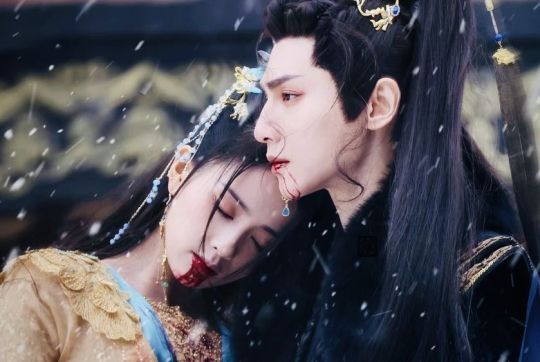
Who needs sleep and sun light, when you got Luo Yunxi as Tantai Jin suffering so prettily? Not me apparently, since I binged the show in one weekend, skipping sleep, only to re-watch the show the second I was done with the last episode. Is there room for improvement? Of course. The editing messed up the pacing, but I still loved it the way it was. My main grievance is that they had to cut so many episodes and side stories. I see a lot of people complain about the complex story-line and plot holes, but I actually think that if you pay close attention its all explained quite well. Only the re-birth connection took me a bit to fully understand. That's why I also like the pacing - it's faster than normal, but that led me to be obsessed with the show by episode 2 (usually it takes me at least 6-10 episodes).
I cried, I laughed, I squeaked and vibrated in excitement. The acting is great through out the show, even the supporting cast is pulling their weight next to two strong leads. The chemistry between Luo Yunxi and Bai Lu is really something. I loved watching the bts moment, when they were overacting their parts only to fall into character so well, once the camera was on.
The show - and Luo Yunxi - pulled my out of a hyper-fixation, that was turning draining and effecting my mental health negatively. I will forever be thankful for this, but also stay cautions not to be dragged into fandom toxicity again.
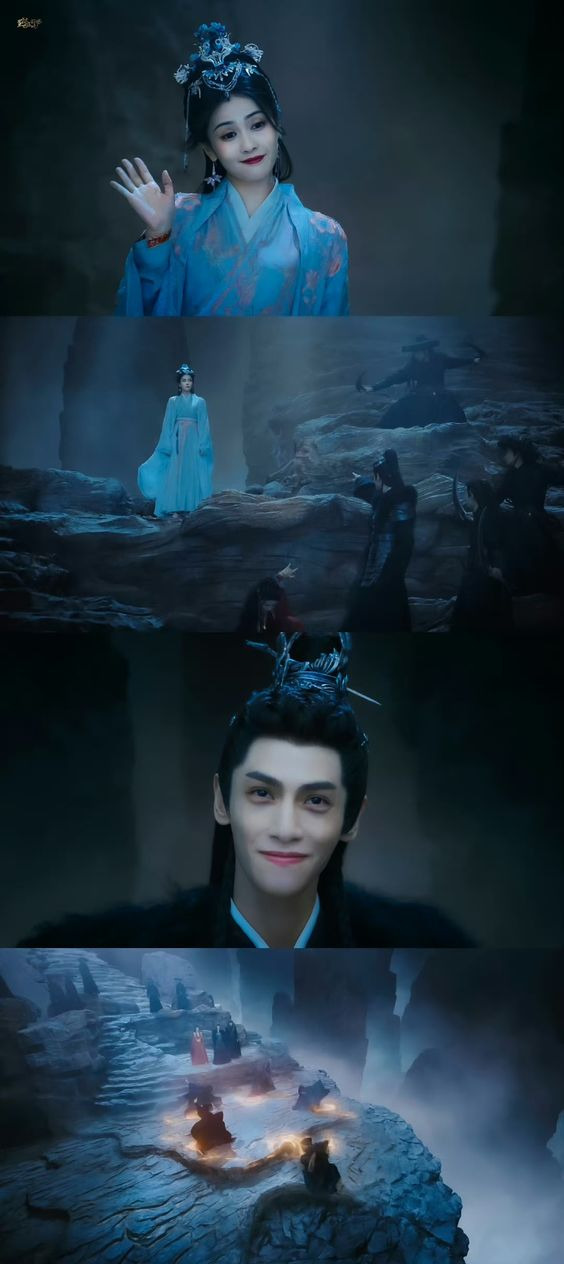
Part 2 coming soon... (including Love is Sweet, Love Between a Fairy and a Devil, And the winner is love and more)
22 notes
·
View notes
Text
movies, tv shows, and books of 2024
((* is a rewatch/reread; currently watching; can’t get through))
Fourth Wing by Rebecca Yarros
Jack o' Frost (s1)
Breathless (1960)
I Hear You're Rich by Diane Williams
Sympathy For Mr. Vengeance (2002)
How to Blow Up a Pipeline (2022)
Out There by Kate Folk
Saltburn (2023)
Bulbbul (2020)
Bicycle Thieves (1948)
Oldboy (2003)
Doona! (s1)
The Guest Lecture by Martin Riker
Survivor (s7*, s46)
Carol (2015)
The Trust (s1)
Jade Legacy by Fonda Lee
The Sleuth of the Ming Dynasty (s1)
EO (2022)
Turn to Me Mukai-kun (s1)
Death Valley by Melissa Broder
Past Lives (2023)
The Traitors (s2)
Whereabouts by Jhumpa Lahiri
Celebrity (s1)
Leave the World Behind (2023)
Society of the Snow (2023)
The Batman (2022)
Lady Vengeance (2005)
Rinko-san Wants to Try (s1)
Her Private Life (s1)
The Rabbit Hutch by Tess Gunty
Good Morning Call (s1)
Triangle of Sadness (2022)
Itaewon Class (s1)
Dumb Money (2023)
Yumi's Cells (s1)
The Eagle (2011)
Sword and Fairy (s1)
Punch-Drunk Love (2002)
Possession (1981)
Iron Flame by Rebecca Yarros
Audition (1999)
Biography of X by Catherine Lacey
My Demon (s1)
Down Low (2023)
Plus One (2019) *
Eustace and Hilda by L.P. Hartley
Upgraded (2023)
Vincenzo (s1)
Backstreet Rookie (s1)
Lucy: The Beginnings of Humankind by Donald C. Johanson & Maitland A. Edey
Scarlet Heart (s1*)
Amidst a Snowstorm of Love (s1)
Doom at Your Service (s1)
Zorba the Greek by Nikos Kazantzakis trans. Peter Bien
Bottoms (2023)
Suspicious Partner (s1)
Possession by A.S. Byatt
Irish Wish (2024)
Eye Love You (s1)
Marry Me! (s1)
Butterflied Lover (s1)
Kiss Goblin (s1)
The Date of Marriage (s1)
Nevertheless (s1)
Please Be My Family (s1)
The Unforgivable and Other Writings by Cristina Campo
The Skin of Dreams by Raymond Queneau
Physical: 100 (s2)
Welcome to Samdal-ri (s1)
The Holdovers (2023)
A Court of Thorns and Roses by Sarah J Maas
Crying in H Mart by Michelle Zauner
Deal or No Deal Island (s1)
A Court of Mist and Fury by Sarah J Maas
Baby Reindeer (s1)
Howards End by E.M. Forster
Anyone But You (2023)
Talk To Me (2022)
Ringu (1998)
Will Love in Spring (s1)
The Idea of You (2024)
K-pop Generation (s1)
Captive Prince by C.S. Pacat *
A Court of Wings and Ruin by Sarah J Maas
Perfect Marriage Revenge (s1)
Us and Them (2018)
Boys Planet (s1)
I-LAND 2 (s1)
Bright Young Women by Jessica Knoll
Camp Zerobaseone (s1)
Gold by Rumi trans. Haleh Liza Gafori
So I Married the Anti-Fan (s1)
MAKEMATE1 (s1)
Cassandra in Reverse by Holly Smale
I Cannot Reach You (s1)
Hit Man (2023)
Start-Up (s1)
Mai (2024)
Prince's Gambit by C.S. Pacat *
Meet Me After School (s1)
The Double (s1)
Not in Love by Ali Hazelwood
Upcoming Summer (2021)
One Day (s1)
The Parades (2024)
Molly by Blake Butler
Story of Kunning Palace (s1)
Kings Rising by C.S. Pacat *
A Strange and Sublime Address by Amit Chaudhuri
Sometimes I Think About Dying (2023)
The Singularity by Dino Buzzati
Anatomy of a Fall (2023)
Silent (s1)
Butterfly of Dinard by Eugenio Montale
Claim to Fame (s3)
Candy Color Paradox (s1)
The Fourth Kind (2009)
Prey (2022)
Destined (s1)
L'Avventura (1960)
No Country for Old Men (2007)
Lovely Runner (s1)
Throne of Blood (1957)
Y/N by Esther Yi
My Journey to You (s1)
My Sweet Mobster (s1)
A Journey to Love (s1)
Fight for my Way (s1)
A Chance Meeting: American Encounters by Rachel Cohen
A Tale of Love and Loyalty (s1)
Plainwater: Essays and Poetry by Anne Carson *
A Familiar Stranger (s1)
Maid's Revenge (s1)
The Immortal Promise (s1)
In Blossom (s1)
#2024#personal#okay..... less tv this year???#has a 2nd book ever fallen so far from the 1st... iron flame was a drag#the double... screeeamminging#okay wow mjty 2nd cp !!!!!
1 note
·
View note
Text
Unveiling The World's Most Expensive Auction Items
MN auctions have long been platforms where rarity, historical significance, and unparalleled craftsmanship converge, resulting in jaw-dropping price tags. From art masterpieces to rare collectibles, the world has witnessed some truly extraordinary items commanding astronomical prices.
Here's a glimpse into the realm of the world's most expensive auction items.
Leonardo da Vinci's "Salvator Mundi" (2017): At the heart of the art world, Leonardo da Vinci's "Salvator Mundi" stands as the most expensive painting ever sold at auction. This masterpiece, depicting Christ as the Savior of the World, fetched a staggering $450.3 million at a Christie's auction in 2017. The buyer shrouded in mystery, secured not just a work of art but a piece of history.
Picasso's "Les Femmes d'Alger" (Version 'O') (2015): Another art marvel, Pablo Picasso's vibrant and complex "Les Femmes d'Alger" reached an auction record of $179.4 million at Christie's in 2015. The piece pays homage to the artist's fascination with the harem theme and showcases his mastery of color and form, solidifying its status as one of the most valuable paintings ever sold.
Pink Star Diamond (2017): Diamonds are forever, and the Pink Star Diamond, a stunning 59.60-carat pink gem, holds the record for the most expensive diamond ever sold at auction. In 2017, it fetched an astonishing $71.2 million at a Sotheby's auction in Hong Kong. The diamond's rarity, combined with its exceptional color and clarity, contributed to its record-breaking sale.
Jeff Koons' "Rabbit" (2019): Contemporary art made its mark in the auction world with Jeff Koons' "Rabbit," a stainless-steel sculpture resembling a balloon animal. This iconic piece sold for $91.1 million at Christie's in 2019, setting a record for the highest price ever paid for a work by a living artist. Koons' "Rabbit" symbolizes the intersection of pop culture and high art.
1962 Ferrari 250 GTO (2018): In the realm of rare automobiles, the 1962 Ferrari 250 GTO holds the title as the most expensive car ever sold at auction. Crossing the block at RM Sotheby's in 2018, this pristine racing car commanded a staggering $48.4 million. The Ferrari 250 GTO's combination of performance, history, and limited production (only 36 were built) contributed to its record-breaking price.
Yuan Dynasty Vase (2010): Antique Chinese porcelain is highly coveted among collectors, and a 14th-century Yuan Dynasty vase proved this in 2010. Unearthed from a suburban London home, the vase soared to a remarkable $85.9 million at auction. Its rarity, age, and exquisite craftsmanship captivated bidders, making it one of the world's most expensive ceramic pieces.
Stradivarius Violin (2011): The timeless craftsmanship of Antonio Stradivari, the legendary violin maker, is revered by musicians and collectors alike. In 2011, a Stradivarius violin known as the "Lady Blunt" sold for an astounding $15.9 million at a charity
auction. The instrument's exceptional sound quality, coupled with its pristine condition, contributed to its record-breaking price.
Ming Dynasty "Chicken Cup" (2014): A small porcelain cup, known as the Ming Dynasty "Chicken Cup," became one of the world's most expensive Chinese artworks when it sold for $36.05 million at Sotheby's in 2014. Decorated with a simple yet charming scene of a rooster and hen with their chicks, this delicate cup's rarity and historical significance captivated collectors.
Action Comics #1 (2014): In the world of comic books, few items hold as much significance as Action Comics #1, featuring the debut of Superman. In 2014, a pristine copy of this iconic comic book fetched $3.2 million in an online auction. Its rarity, coupled with the cultural impact of introducing the first superhero, made it an invaluable collector's item.
Graham's George Washington Gold Coin (2013): In 2013, a 1792 gold coin featuring George Washington's image was auctioned for an astounding $1.7 million. This unique coin, known as the George Washington President Gold Eagle, is one of the earliest examples of coinage in the United States and holds immense historical significance.
These record-breaking auction items showcase the diversity of the market, spanning art, jewelry, automobiles, and collectibles. The world's most expensive auction items not only reflect the extraordinary craftsmanship and historical importance of each piece but also highlight the passion and willingness of collectors to invest in the rarest and most iconic artifacts from human history.
0 notes